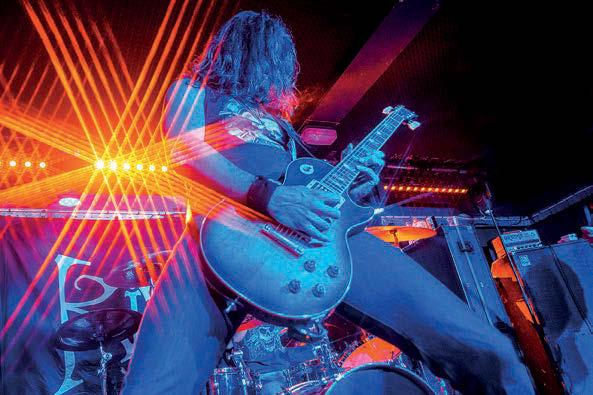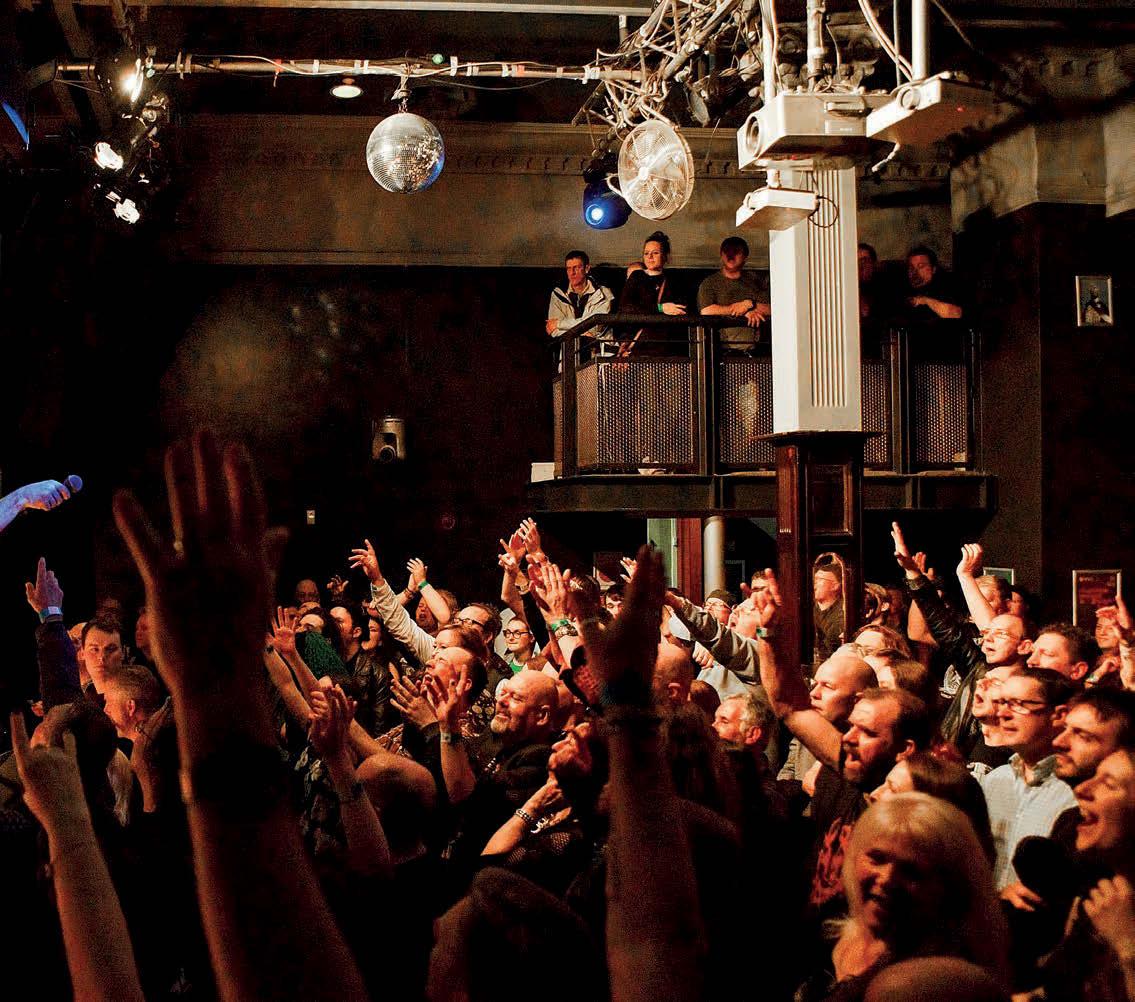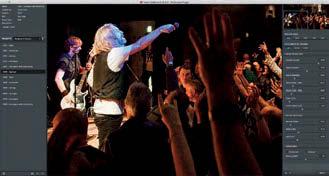
4 minute read
Gig secrets
Low-light gig secrets
Gigs are up and running so refresh your low-light concert photography skills with these practical tips from seasoned music shooter Shona Cutt
Incorporating the crowd into the shot really helps capture the atmosphere Canon EOS 5D Mark III, 24-70mm, 1/320sec at f/2.8, ISO 1000
Most of us can get to gigs again, so here’s a reminder of the core skills you need for images with way more impact than the punters in the crowd will get with a phone. Whether you are shooting a massive arena show or a tribute band down the pub, the core principles of low-light gig shooting remain.
Indeed, smaller gigs are often less stressful, and you’re usually able to stay after the first three songs. The performers might really like your pictures too, and ask you back to shoot them again. And who knows, that talented local band could become huge one day, so it’s well worth trying to build a relationship with them through photography.
Fast lenses and high ISOs
‘My first tip for low-light photography is to use the fastest lens you can,’ advises highly experienced gig photographer Shona Cutt. ‘I use a Sigma 24-70mm f/2.8 bought second-hand 11 years ago. It was all I could afford at the time but still works really well. I also hire a 70-200mm f/2.8 lens as needed. Being able to shoot at a wide aperture makes life much easier as the light often changes all the time – you combine it with a higher ISO and faster shutter speed, as required. I also have a Canon 50mm f/1.8 which I take to gigs, but mainly use for band portrait shots.’
Shona is also a great believer in using the highest ISO setting you can in order to get decent shots in low-light gig situations. ‘Higher ISOs are usually essential in smaller venues,’ she counsels. ‘I will happily shoot at ISO 6400 and sometimes higher. It’s always better to have a noisy shot than a slightly blurry one. The highest I usually go is ISO 6400 but will try to stay lower if I can depending on the venue/band. The highest I’ve managed to get successful results is at ISO10,000. Any higher and you risk the image becoming a noisy mush of pixels – I’ve learnt the hard way!’
In terms of camera and lens settings, Shona’s mantra is to try to get as much Below left: Watch carefully for cool poses to give your shots character Cxnon EOS 5D Mark III, 24-70mm, 1/400sec at f/2.8, ISO 5000
Below: Expose lights correctly and they can look great Canon EOS 5D Mark III, 24-70mm, 1/400sec at f/2.8, ISO 6400


light in as possible. ‘I keep the aperture wide open at f/2.8 and try to restrict the maximum shutter speed to 1/400sec as anything higher will further restrict whatever light is available from reaching the sensor. Back-button focusing will also help you get a sharper image, especially if the band are active performers.’
For metering, Shona favours the spot setting. ‘Spot metering makes it easier to take a very specific reading based on where you are focusing, and avoid blowing out highlights – a real risk with gig photography.’
Keep it moving
Fast lenses and smart camera settings are one thing, but Shona also emphasises the importance of good composition when it comes to gig shots. You can have your camera settings spot on, but it won’t help if the singer has a toilet sign over their head, for instance, a mic obscuring their face, or other stage gear sprouting out of the guitarist’s head as they blast out an epic solo. ‘Don’t be scared to move around the venue if you can,’ Shona adds. ‘Nearly all smaller venues will have areas where you can catch the stage lights better than other positions. Take your time: watch the lights for a pattern and listen to the music to anticipate where you need to be. If a big chorus is coming, try to get a shot with the crowd belting their hearts out, for example.’
It’s also important to respect the crowd. ‘Paying punters are the most important people there, as the band would not be performing without them. So try not to get in anyone’s way. Get to venues as early as you can to find a decent spot. Once you have got the shots you need, move around a bit, which helps other photographers present. It also helps to chat to the crowd; once they know you are not trying to push in front of them; most of time they will help you as long as they know you are not there for a long time.’ See Shona’s Instagram page at www.instagram. com/shonacuttphotography/
Editing tips
Some low-light gig images may need more work at the editing stage. ‘Adjusting the exposure, colour balance and saturation levels can help bring digital noise down more than the noise-reduction tool in Lightroom, which can remove too much detail. If the image still needs a bit of extra help, the Denoise plug-in from Topaz Labs for Photoshop has saved my skin many times, especially when I first started. I only tend to use the lightest setting (Raw Lightest) as it is destructive and you can lose a lot of detail if not careful. Sometimes I will also use a High Pass filter to help sharpen key details again.’











